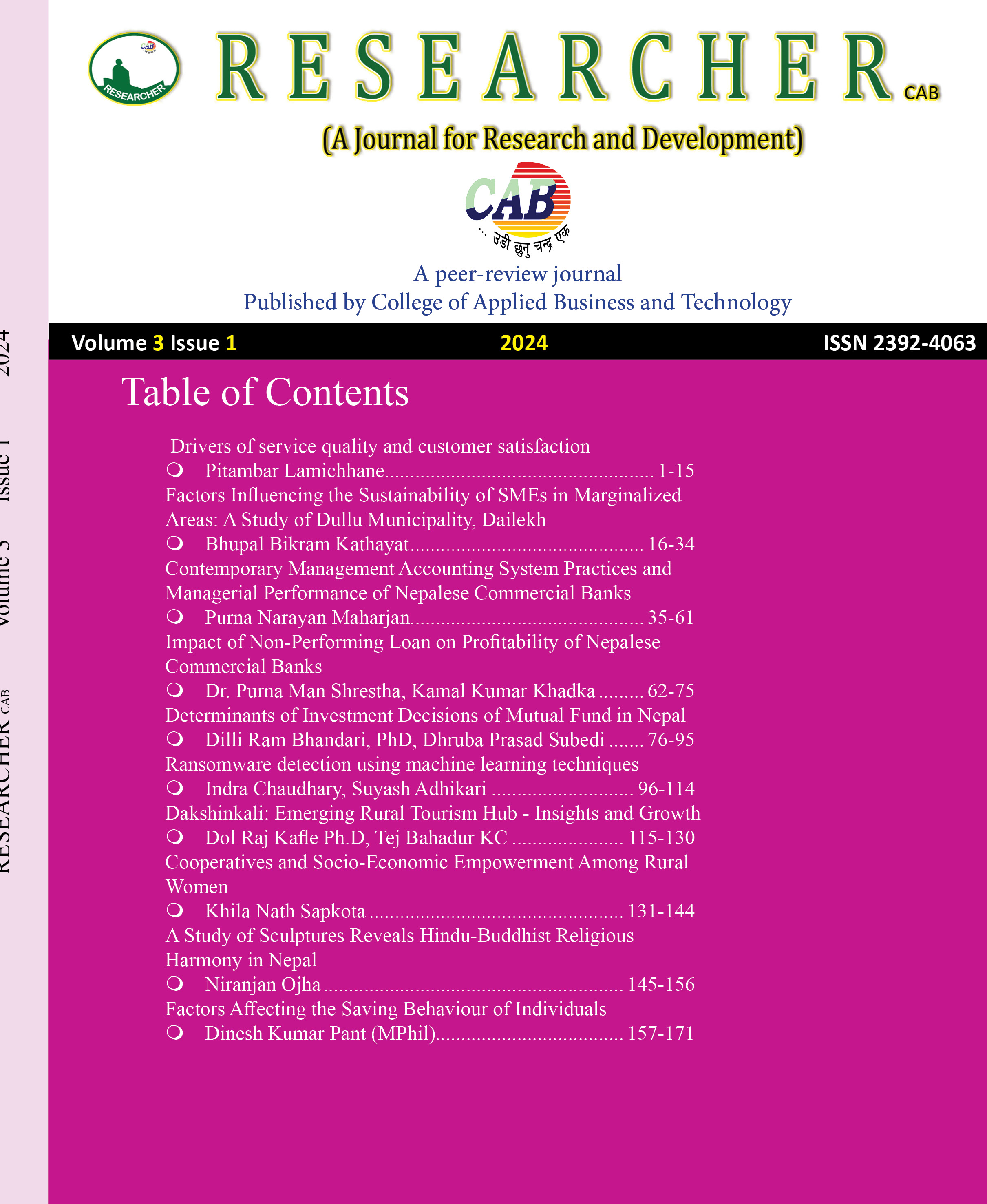Dakshinkali: Emerging Rural Tourism Hub - Insights and Growth
DOI:
https://doi.org/10.3126/rcab.v3i1.68425Keywords:
Destination, cultural exchange, community, bustling, nestledAbstract
Dakshinkali, situated in the southern part of the Kathmandu Valley, has evolved into a prominent rural tourism destination centered around a Hindu temple dedicated to Goddess Kali. As an incarnation of Mother Parvati, the temple's significance surged during the reign of King Pratap Malla, fostering a rise in religious and rural tourism. The increased influx of visitors has stimulated local economic growth by selling their local products, resulting in heightened business activities, increased employment rates, and improved living standards. The growing popularity of Dakshinkali as a rural tourism destination motivates the community to preserve its culture, tradition, and indigenous knowledge. Tourist support motivates locals to safeguard their culture, contributing to the growth of tourism and income. Dakshinkali is popular because it is close to Kathmandu and has a peaceful rural atmosphere. It is considered a sought-after destination, following the global trend of rural tourism. This study explores Dakshinkali's role in rural tourism, using a qualitative research design and historical frameworks. The findings highlight Dakshinkali as the nearest and most significant rural tourism hub in the Kathmandu Valley, set for continued growth. Its increasing popularity, driven by a growing disinterest in modern city life, is evident in its rising appeal. With the world favoring rural destinations, Dakshinkali shows promise for the future of rural tourism in the region.




